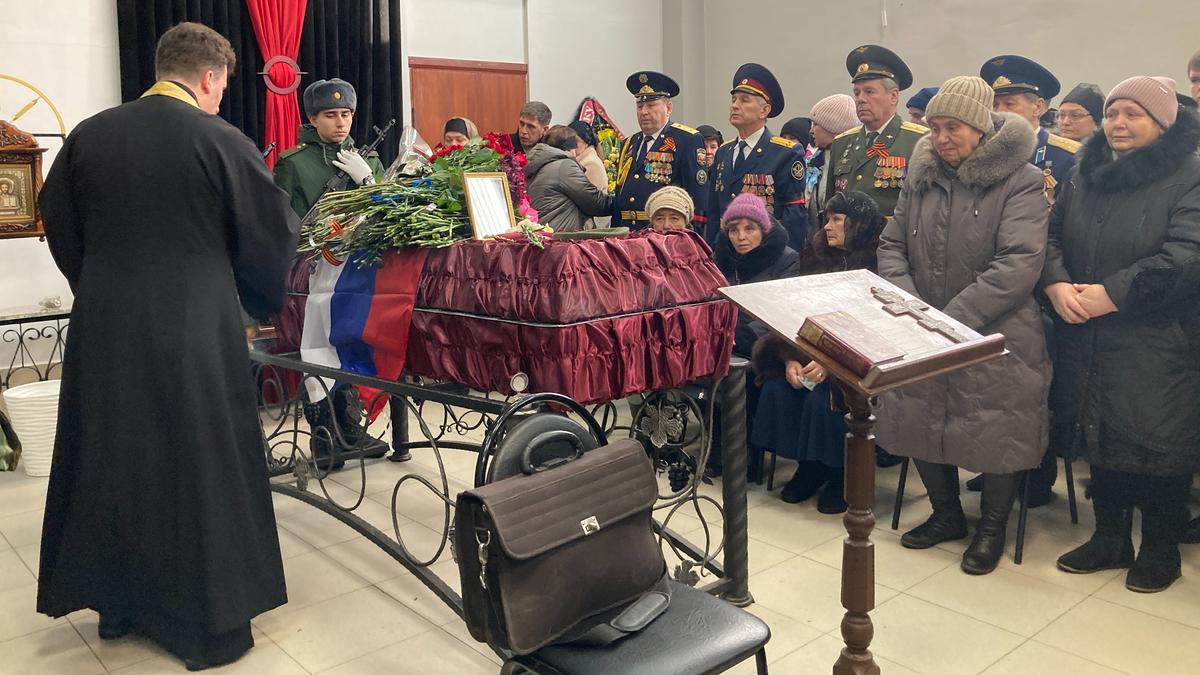Makiivka, the Ukrainian city where hundreds of Russian conscripts died on New Year’s Eve, should become a household name. When you find out who these soldiers were, how they got to the war, and why they went there, it seems that the longer the war lasts, the more “Makiivkas” are still ahead.
Before 7 January, when Christmas is celebrated by the Orthodox church, a frost down to –30°C hit the Russian town of Samara. The ice playfully reflected the Christmas lights, which made the city look very festive. The music was playing, people were in a hurry to have fun before the holidays were over. Amid these lights, this music and all this fun, coffins were brought to Samara on Christmas Eve. In the petrified earth, they had to urgently hollow out graves for the deceased from the Ukrainian Makiivka. How many graves? And how many perished in April, along with the cruiser Moskva? No one knows for sure.
On the night of 1 January, Ukrainian HIMARS missile strikes destroyed a building that had been turned into barracks of Russian troops in the city of Makiivka near Donetsk. The three-storey building was simply rubbed into the asphalt. According to Novaya-Europe, one of the battalions of the 44th Regiment of the 2nd Guards Combined Arms Army has been stationed there since December 17. Those mobilised in the Samara region were assigned to this regiment.
No one says the exact number of deaths. The military commissar of the Samara region announced that they would not be named: they would not publish any lists so that the secret would not be found out by Ukrainian intelligence. People in Samara themselves are trying to collect at least some information and make their own calculations.
“In December, three battalions left there”, a woman whispered in my ear at the funeral of a mobilised man in the town of Novokuibyshevsk. “The first and second were sent to the front line on 28 December, I know that for sure, my neighbour’s both sons were taken there.” And the third battalion remained in the barracks, it seems they were waiting there until the equipment came up. They didn’t even have the chance to fight.
According to the information that people in Samara tell each other, the equipment was gradually arriving in Makiivka, it was placed next to the barracks building to go into combat immediately after the holidays. Ammunition was stored inside the barracks. The ammunition detonated from the missile strikes, and the equipment caught fire. There are not even ruins left of the three-storey building.
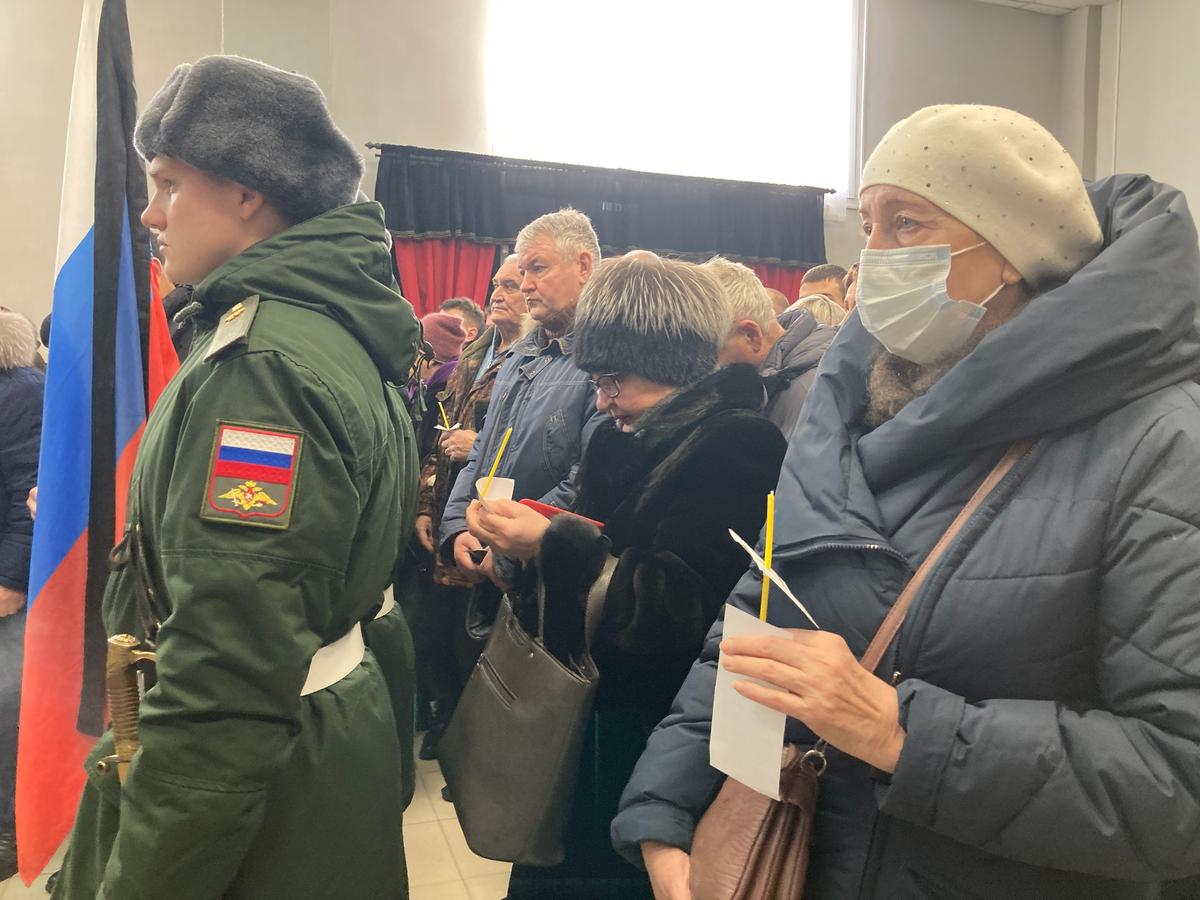
Funeral service in the morgue of Novokuibyshevsk. Photo by Irina Tumakova, for Novaya Gazeta Europe
Another regiment composed of those mobilised in the Samara region — the 43rd — remains (as of 12 January) at a training base 20 kilometres from Samara. One of the battalions includes 580 people.
According to this data, it can be estimated that there was about the same number of people in the barracks in Makiivka at the time of the strike. Ukrainian intelligence claims that there were also a special forces detachment, signalmen, gunners and units of Russia’s National Guard, but the regular military could spend New Year’s Eve somewhere else. There is also a rumour that some of the mobilised went AWOL, and this saved their lives.
In the Ukrainian sources, there were data on six hundred bodies taken out from under the rubble on twelve trucks. In Samara, they do not believe this. The information that appeared in the first days after the strike has not changed yet: 89 bodies have been identified.
As it was with the cruiser Moskva, the rest of the servicemen, if they have not yet contacted their relatives, are considered missing. Compensation payments to relatives can be avoided in this case.
The Defence Ministry blamed the draftees themselves for their death, claiming they chatted on the phones and thereby caused the enemy fire.
Later, a video appeared online: a big and obviously not very young man with a disfigured face introduces himself as Anton Golovinsky and says that Colonel Yenikeyev, who gathered the battalion in one hall to listen to Putin’s speech, caused everyone’s death. There is a postscript to the video: Anton Golovinsky died of burns shortly after recording the video.
If you call the flat where Anton Golovinsky lived, the intercom shows an error. No one has been there since September. Neighbour Lyuba, who had known Anton since childhood, confidently said: it was not him in the video. The real Golovinsky, according to her, is a young man, skinny and unhealthy. He was really mobilised in September, although the neighbour still can’t understand how it happened.
“He was in a mental hospital, a drug addict,” she shared. “Then he seemed to get better, got married, had two children. And in 2019, something happened to him — no one knows. He jumped out of the house, ran naked down the street, cut himself all over… I don’t know how he could be drafted after that.”
It is unknown where the real Anton Golovinsky is now, or whether he is alive. But Colonel Yenikeyev, apparently, was not injured during the attack on the barracks. Relatives of the mobilised, who were subordinated to Yenikeyev, say that on the night of 1 January, he was not in the barracks.
‘I’m the same’
No one in Samara knew when and where the bodies would be taken. Later it turned out that some bodies were taken to Samara, the rest to other towns and villages from where the mobilised had been sent. This is logical: on the one hand, it is necessary to bury heroes at home, on the other — too many grieving people would not gather in one place at the same time. No one was going to arrange a general farewell to the heroes.
Alexander (name changed) went to military enlistment offices to find out where his friend was. He was mobilised in September, and nothing has been heard about him since December. But military enlistment offices give information only about relatives, and his friend has no relatives.
“My friend is 42 years old,” says Alexander. “His employer, let’s say, framed him, hung a debt of two and a half million on him.” This debt has been there for five years. I told him to file for bankruptcy. And then came the mobilisation. He went to war to earn money. He said that they promise to pay a lot if you are wounded. Like he’ll lose his leg, and they’ll give him three million for it.”
The community centre in the village of Mirny cancelled a Christmas concert on 7 January, but they did not dare to remove the festive decorations from the street. And under the reflections of Christmas lights in the foyer, there were two coffins. On one of the wreaths over the first coffin, I read that the deceased’s name was Dmitry Romadanov. Over the second coffin, wreaths were unfolded in such a way that I could not see the name.

Mobilised Andrey in Mirny. Photo by Irina Tumakova, for Novaya Gazeta Europe
Next to the farewell hall, a puny drunk man was crying. His name is Andrey, he is mobilised just like the deceased, only he has not yet left to fight. The day after the funeral, Andrey had to return to the training unit. An employee of the community centre, a pretty blonde, tried to take him outside to cry there. But, hearing that the press was here, the man broke out.
“I’m the same as them,” he clung to my hand and began to tell me quickly. “I am 50 years old, and that’s how they lawlessly took me away. I went up to the military commissar, looked into his eyes, and he looked back at me like that — with no shame, no conscience…”
“Mobilisation is up to 50 years,” the blonde repeated under her breath and pulled the poor man by the other arm to the exit.
“I worked as a driver,” Andrey continued. “They tell me: ‘you will be a machine gunner’.” And I’m already so old that I can’t see anything. And now I’ll be on my way tomorrow.
We were assembled back in October, on the 27th. I was the last person in the military enlistment office. I have an umbilical hernia! Then they let us go on leave for the New Year, and back tomorrow. And what should I do?!
He broke away from the blonde again. He collapsed on a chair in the foyer, rolled up his sweatpants high and showed me skinny shins covered with ulcers. Then he jumped up, picked up his jumper and showed me an umbilical hernia. I thought that this soldier probably would not fight for long.
“They were the same, I knew them both,” he pointed his finger in the direction of the coffins. “There was a medical examination — they didn’t see anything. I have an iron pin in my leg. They say that mines react to them at once. No one was taken who had implants. Only I was taken away. I can’t go there! That is, I’m going, I have nowhere to go. But you tell me: why?! The military commissar asked me a question: do you want to serve? I answer: no, I can’t for my health any more. And he said to me — ‘you will anyway…’”
Christmas concert
On 8 January, they were burials in many cities and villages of the region. In Samara, unknown persons announced a rally on the Square of Glory. The authorities were demanded to declare a mourning period, and fellow countrymen who would risk coming to the rally were promised free vodka distribution. About a dozen people gathered. I took out my camera and was immediately detained for participating in an illegal mass event. I spent the next two hours at the police station.
At that time, the mobilised Alexander Androsov was buried in Maryevka. He was 38 years old. His mother lives in a village. He lived in Samara with his wife and daughter and worked as a driver at a grocery store. Once he got caught driving drunk. Then his name flashed in police reports in connection with the theft of a car battery, spare wheel and petrol from a fellow villager.
In September, when partial mobilisation began, Androsov received a summons. It came from the military enlistment office to his mother in the village. Mom informed her son, he went to the military enlistment office, and a few days later the family escorted him to the unit.
On the same day, in the city morgue of Novokuibyshevsk, in the farewell hall, there was a memorial service for Ensign Georgy Lozhkin. A woman was crying to the right of the coffin. Behind her, middle-aged men in the uniforms of WWII veterans stood in a row with motionless faces, their tunics covered with orders and medals like shells. When one of them went out to smoke, I asked if he knew the deceased.
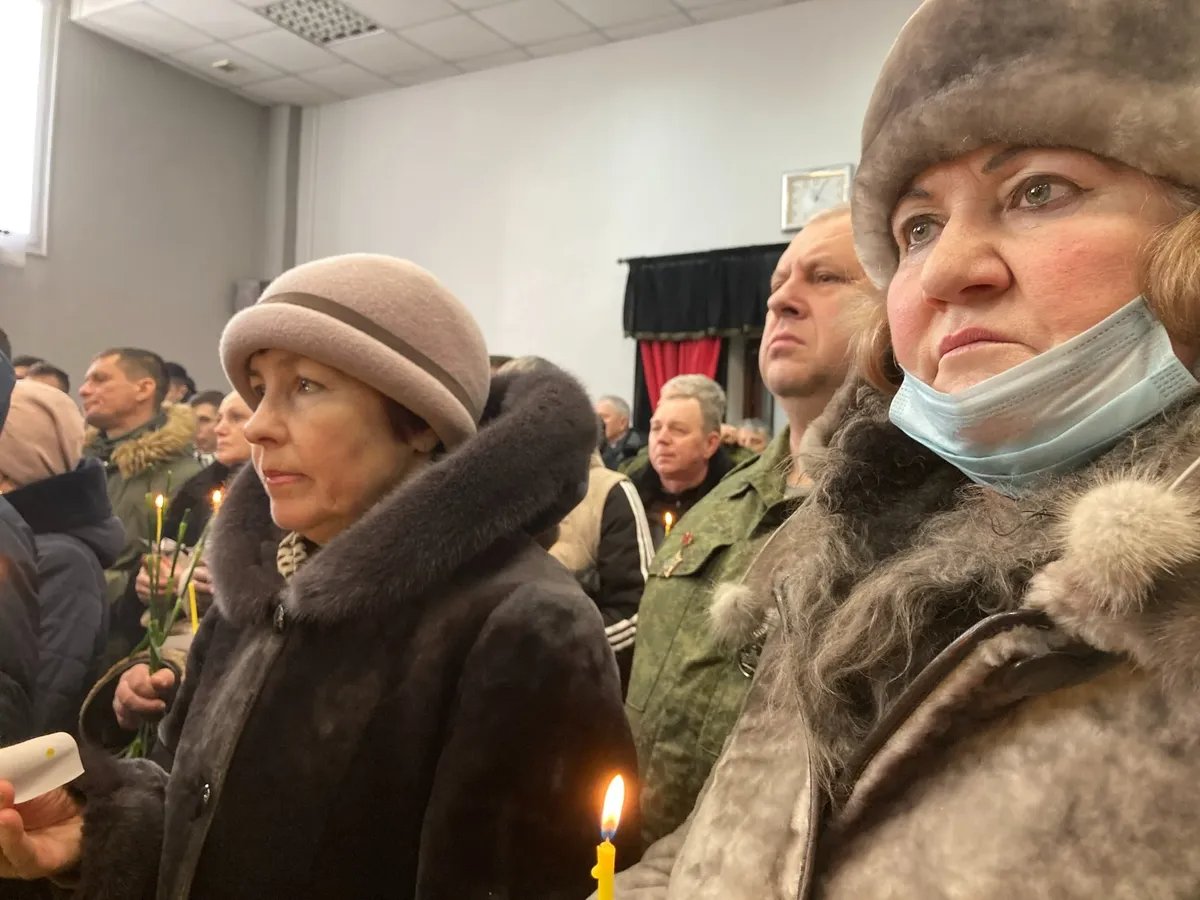
Funeral service in the morgue of Novokuibyshevsk. Photo by Irina Tumakova, for Novaya Gazeta Europe
“No, not at all,” the veteran smiled. “We are from the Union of Reserve Officers, we are always called when soldiers are laid to rest.”
Georgy Lozhkin was 46 years old. His eldest son works as a doctor here in Novokuibyshevsk. The youngest turned nineteen. Lozhkin himself served as a security guard at an oil refinery. He didn’t earn much. When the mobilisation began, he went to the military enlistment office as a volunteer.
“He was a bright man,” recalls Marina, a neighbour of the Lozhkins. “I only found out the other day that he had deceived his wife: he told her that the summons had come. Our sons were in the same class, and the kids were talking to each other — that’s how we found out that he, it turns out, voluntarily left.
So that was the call of his soul. To defend our country. Our Russia, you know, it’s always been… Not everyone will go to war as a volunteer, especially now …”
“Do you have a family?” I interrupt Marina.
“Yes, I have a husband and a son.”
“Would you like them to also go ‘to defend our country’?”
“I wouldn’t, of course…”
A day later, three more Makiivka victims were buried in Novokuibyshevsk, and in the evening there was a Christmas concert in the city recreation centre.
“Why cancel it?” asked the recreation centre employee in surprise.
In total, in their small town, as they said, they know of ten dead.
“But we don’t know how many of our soldiers have been brought, no one says anything,” said the centre employee. “There are still a lot of people under the rubble.”
‘This was his chance to return to the army’
On the morning of 9 January, a farewell ceremony was held for Lieutenant Colonel, Deputy Commander of the 44th Regiment Alexey Bachurin at the Samara Officers’ House. The memorial service was held in the same hall where the children danced around the Christmas tree the other day. Inside, they guessed to remove the signs of the holiday.
Portraits of Stalin and other “grand marshals” were again viewed from the walls. The stand “Armed Forces of the Russian Federation” with a portrait of Sergei Shoigu was opened with a quote from the Minister of Defence: “We need a strong, professional and well-armed army for the prosperous and peaceful development of the country.” When the coffin was taken outside to be taken to the cemetery, the procession was greeted by the New Year’s decoration of the central square. And the hearse drove through the city, which continued to have fun, despite the first working day.
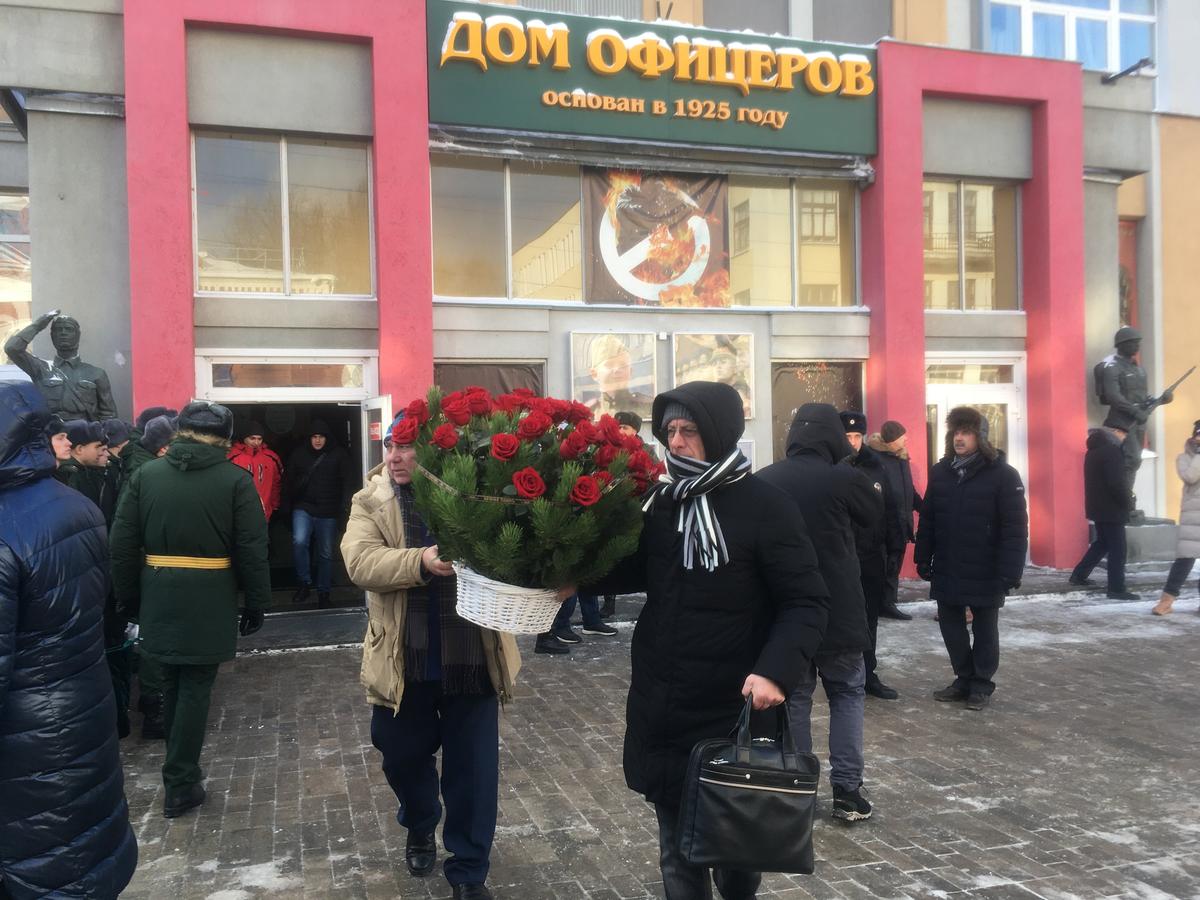
Farewell in the House of Officers. Photo by Irina Tumakova, for Novaya Gazeta Europe
“Alexey and I served together, I was his commander,” says Vyacheslav, a friend of Lieutenant Colonel Bachurin. “Then our paths slightly parted. I retired, and he went on to serve, and entered the Academy. But soon he had to quit. There were some troubles there… Not very good circumstances. He tried to work here and there. He worked with me, in my business. I don’t know where he went afterwards.
By the beginning of the mobilisation, according to Novaya Europe information, reserve lieutenant colonel Bachurin had two overdue loans for five years. His friend is sure that Alexey did not go to war for money.
“Alexey was very happy when he was called up,” Vyacheslav is sure. “The army was his life, it was everything to him. Money for service — he didn’t care much about it, it was just the service that was important to him. I was leaving — the salaries in the army were pennies — and he stayed to serve. Mobilisation was an opportunity for him to return [to that life].”
The 44th Regiment arrived in Ukraine on 17 December. Deputy Commander Bachurin was responsible for the combat training of the mobilised. Maybe he even managed to prepare them, but no one had the chance to check them.
“When they came there, their only weapons were machine guns, and you can’t approach tanks with machine guns,” Vyacheslav continues. “I asked him: Alexey, do you have any heavy arms? He replied that there was absolutely nothing. No tanks, no infantry fighting vehicles, no ATGMs. Their battalion was waiting to be attached to someone.
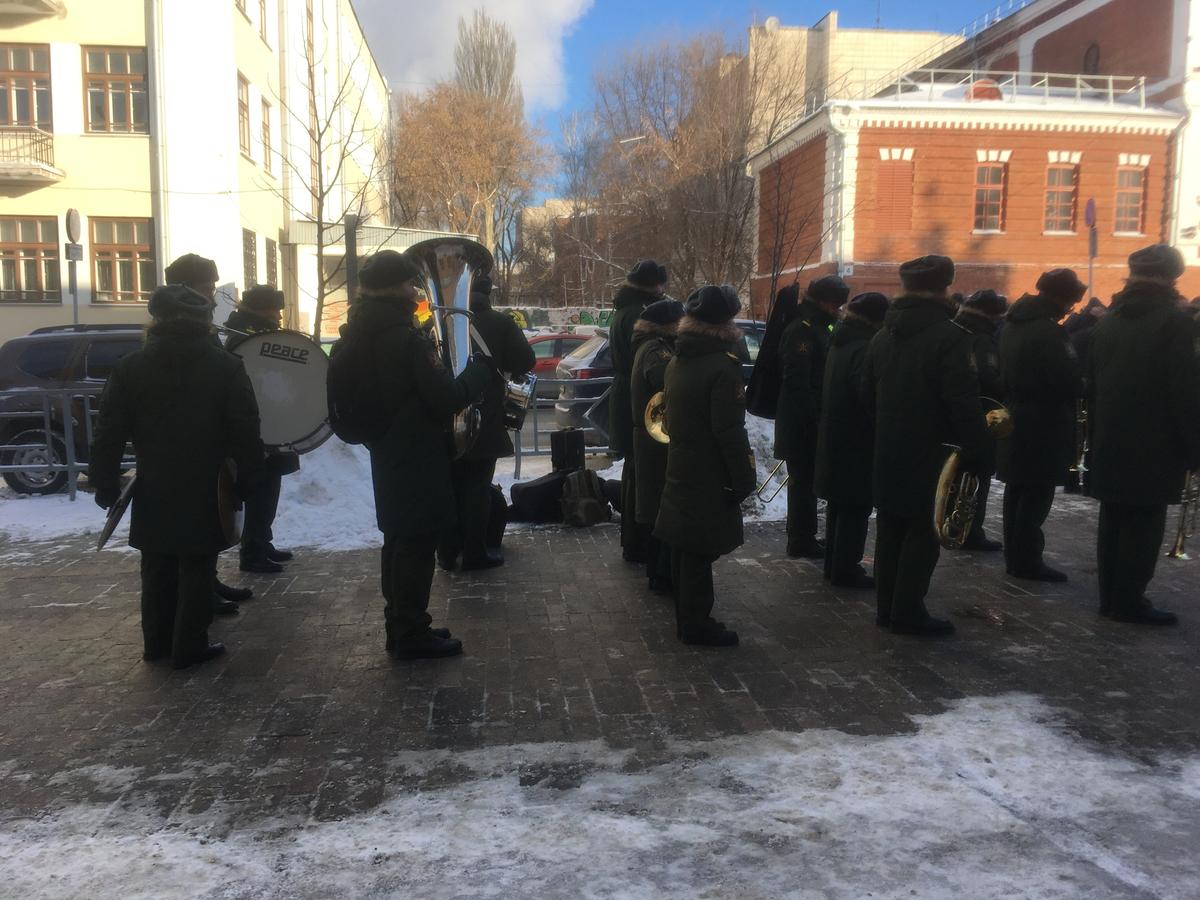
Farewell in the House of Officers. Photo by Irina Tumakova, for Novaya Gazeta Europe
The coffin with Bachurin’s body was lowered into the grave to a salute and the anthem. Nearby, two more pits were waiting for two more killed in Makiivka. There was no such farewell with them, they were held at different times, just to avoid showing that three people were buried at once in one cemetery on one day and only in Samara.
I read the second name on the cross leaning against the fence near the second fresh pit: Anatoly Pochinyaev, 48 years old.
If you walk through the cemetery, you can read the history of this war by the fresh crosses. At the end of June and in July, Russian troops were conquering Sievierodonetsk and Lysychansk. In September, the AFU launched a counteroffensive near Kharkiv, and liberated Balakliya and Izium. A “partial mobilisation” began in Russia. The Russian troops had to leave Kherson… Each such stage meant new crosses with new dates, with a difference of a day or two. And this is only in one cemetery in Samara alone, and we had not known about it before. How many cemeteries are there all over the country where no one counts the new graves?
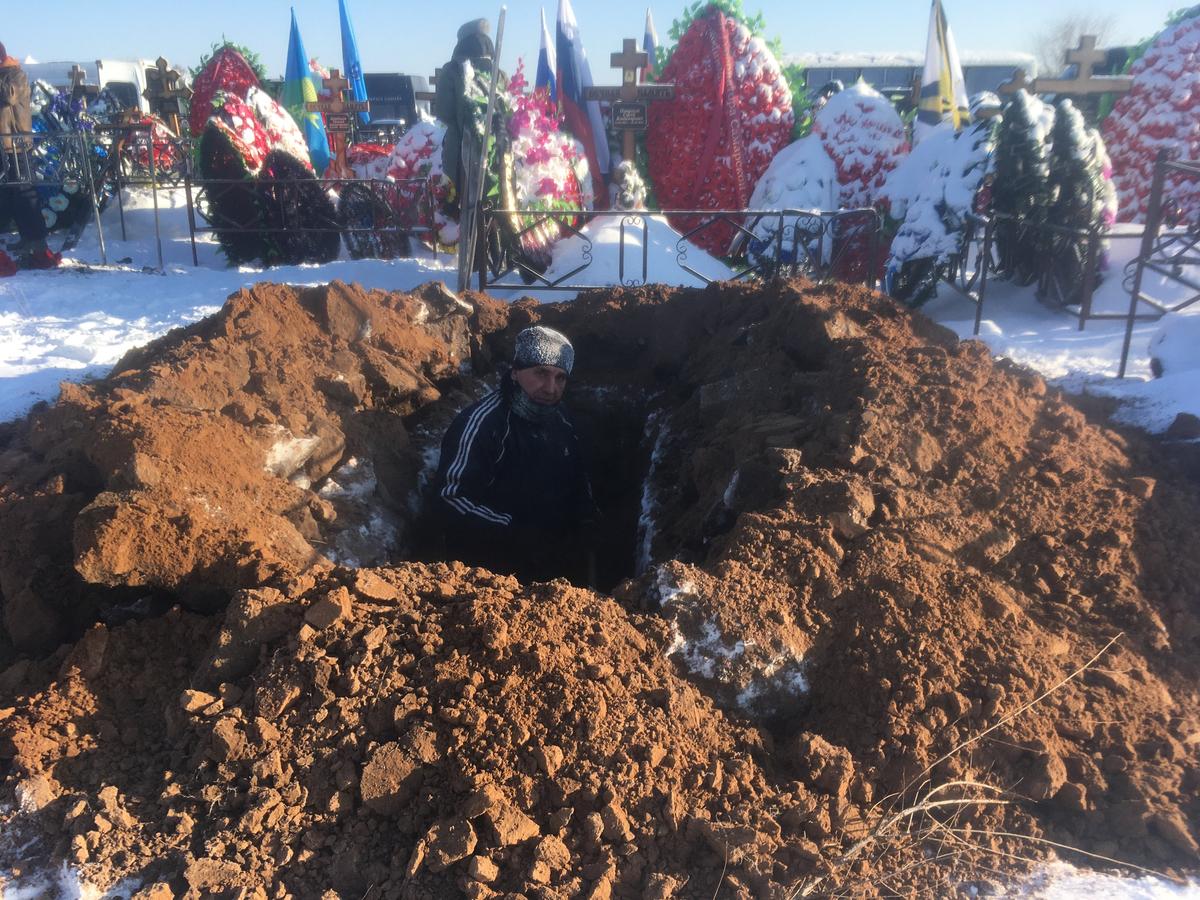
At the cemetery in Rubezhnoye. Photo by Irina Tumakova, for Novaya Gazeta Europe
With the participation of Viktor Ivanov
Join us in rebuilding Novaya Gazeta Europe
The Russian government has banned independent media. We were forced to leave our country in order to keep doing our job, telling our readers about what is going on Russia, Ukraine and Europe.
We will continue fighting against warfare and dictatorship. We believe that freedom of speech is the most efficient antidote against tyranny. Support us financially to help us fight for peace and freedom.
By clicking the Support button, you agree to the processing of your personal data.
To cancel a regular donation, please write to [email protected]
